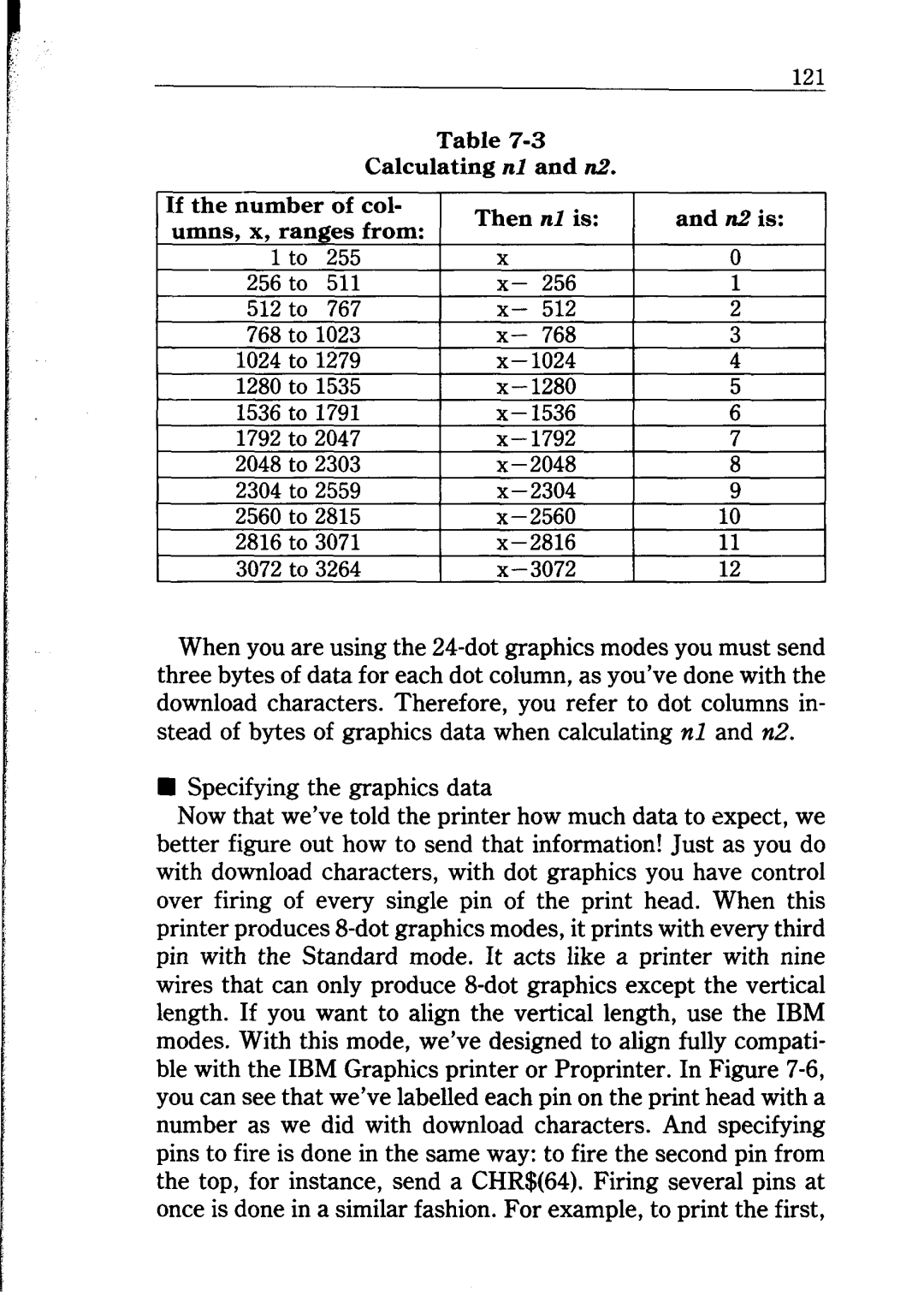
I ‘.
121
Table
Calculating nl and n2.
If the number of col- umns, x, ranges from:
1 to 255
256 to 511
512 to 767
I 768 to 1023 1024 to 1279 1280 to 1535 1536 to 1791 1792 to 2047
3072 to 3264
Then nl is: |
| and n.2is: | I | |
|
|
|
| |
X | 9cc |
| 0 |
|
y- |
| 1 |
| |
x- | iJl& | I | 6 | I |
| 3 | I | ||
I | 4 |
| ||
|
|
|
| |
I | i |
| ||
x |
|
|
| |
x- | 1536 |
| 6 | 1 |
x- | 1792 |
|
|
|
_ | 1 |
|
| |
|
|
|
| |
I | li |
| ||
. | 9OlC | 11 |
| |
| 12 | 1 | ||
When you are using the
m Specifying the graphics data
Now that we’ve told the printer how much data to expect, we better figure out how to send that information! Just as you do with download characters, with dot graphics you have control over firing of every single pin of the print head. When this printer produces &dot graphics modes, it prints with every third pin with the Standard mode. It acts like a printer with nine wires that can only produce &dot graphics except the vertical length. If you want to align the vertical length, use the IBM modes. With this mode, we’ve designed to align fully compati- ble with the IBM Graphics printer or Proprinter. In Figure
